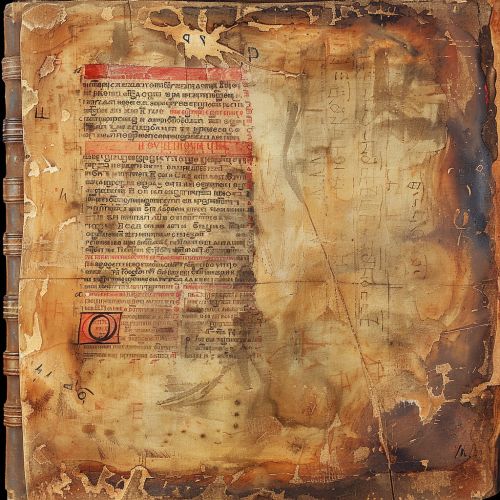Cyrillic script
Origins and History
The Cyrillic script is a writing system used for various languages across Eastern Europe and northern and central Asia. Named after Saint Cyril, a missionary from Byzantium, it is believed to have been created in the First Bulgarian Empire during the 9th century AD. The Cyrillic script is derived from the Greek uncial script, incorporating some letters from the older Glagolitic alphabet for sounds not present in Greek.


The Cyrillic script was first developed in the Preslav Literary School in the First Bulgarian Empire in order to translate Greek religious text into the Old Church Slavonic language. The script was later used in the Second Bulgarian Empire, becoming the country's official script in 893.
Structure and Design
The Cyrillic script is an alphabet with each symbol representing a distinct sound, similar to the Latin alphabet. The script is used in various forms for the national languages of many Slavic states and Turkic, Uralic, Caucasian and Iranic peoples.
The Cyrillic script has been adapted to write over 50 different languages, each with its own modifications and unique letters. These adaptations may include additional letters, removed letters, or unique ligatures. For instance, the Russian alphabet uses the Cyrillic script with 33 letters, while the Serbian alphabet has 30.
Modern Usage
Today, the Cyrillic script is used as the official script of various Slavic nations, including Russia, Ukraine, Belarus, and others. It is also used by many non-Slavic nations in Eastern Europe, the Caucasus, and Central Asia.
The script's usage is not limited to Europe and Asia, however. Cyrillic has been used in North America, specifically in Alaska, until the late 19th century. It is also used by the Eastern Orthodox and Eastern Catholic Church for liturgical purposes.
Variations of the Cyrillic Script
The Cyrillic script has numerous variations, each tailored to fit the phonetic peculiarities of the language it has been adapted to. Some of these variations include the Russian, Bulgarian, Serbian, and Macedonian alphabets.
The Russian alphabet, one of the most widely used forms of the Cyrillic script, has 33 letters. The Bulgarian alphabet, another variant, has 30 letters. The Serbian alphabet, which is almost identical to the Macedonian alphabet, has 30 letters, while the Macedonian alphabet has 31.
Influence and Impact
The Cyrillic script has had a significant impact on the cultural and linguistic development of Eastern Europe and Asia. It has facilitated the spread of literacy and Christianity, preserved national identities, and served as a foundation for some of the world's most significant literature and scientific discoveries.
